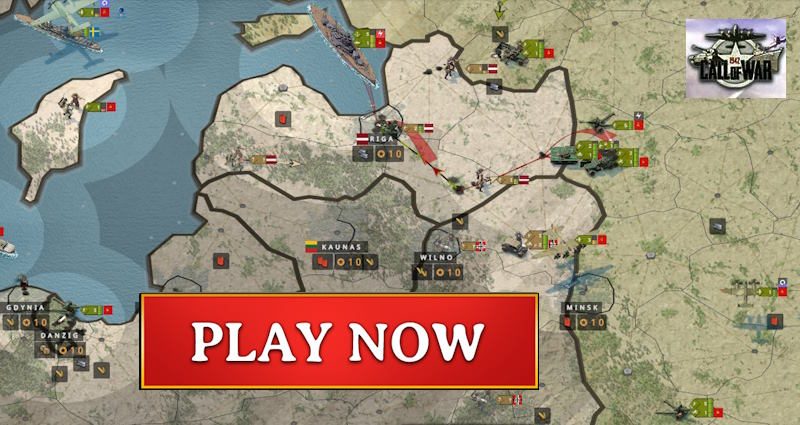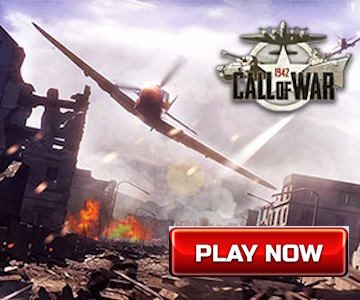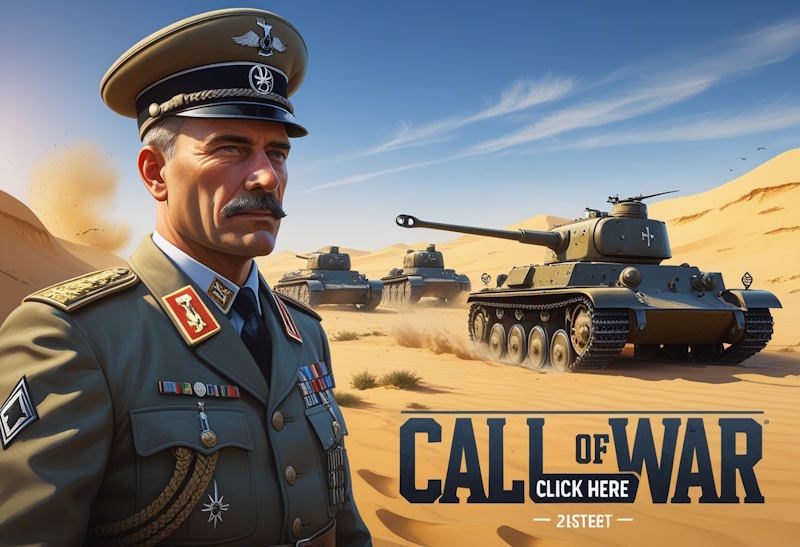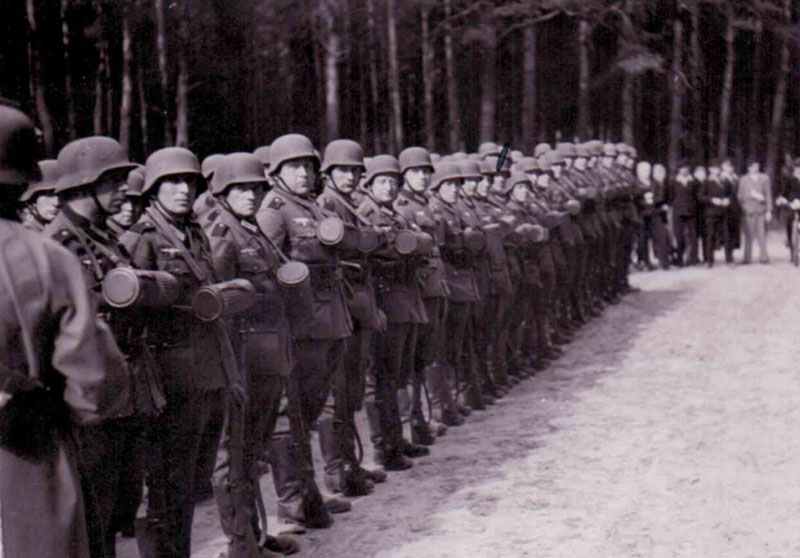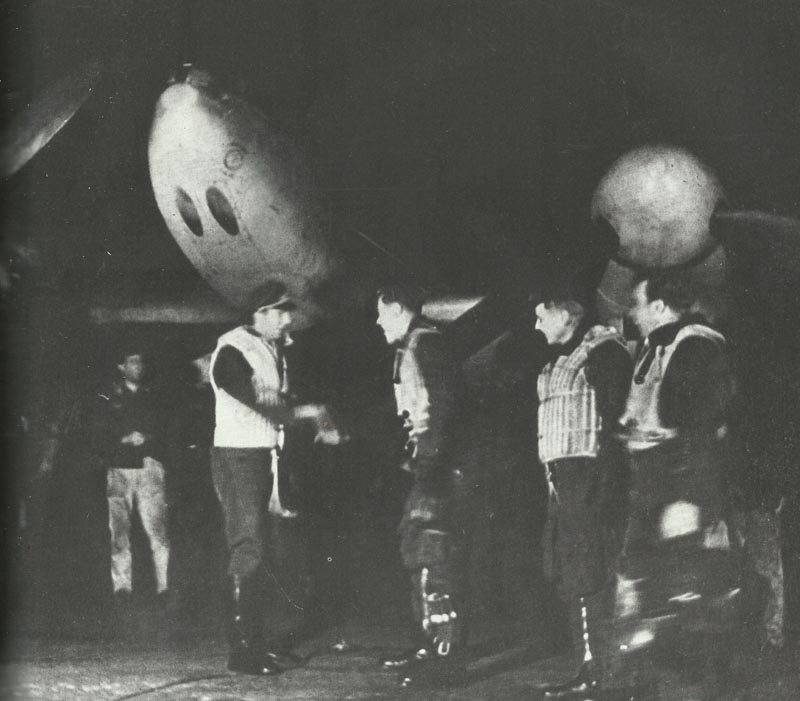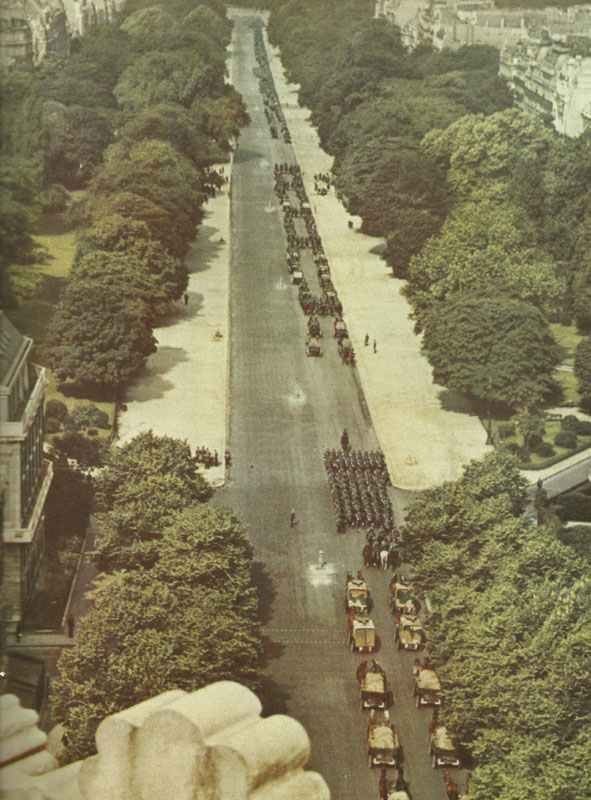Formation, commanders, and operations of the 11th SS Volunteer Panzer Grenadier Division “Nordland.”
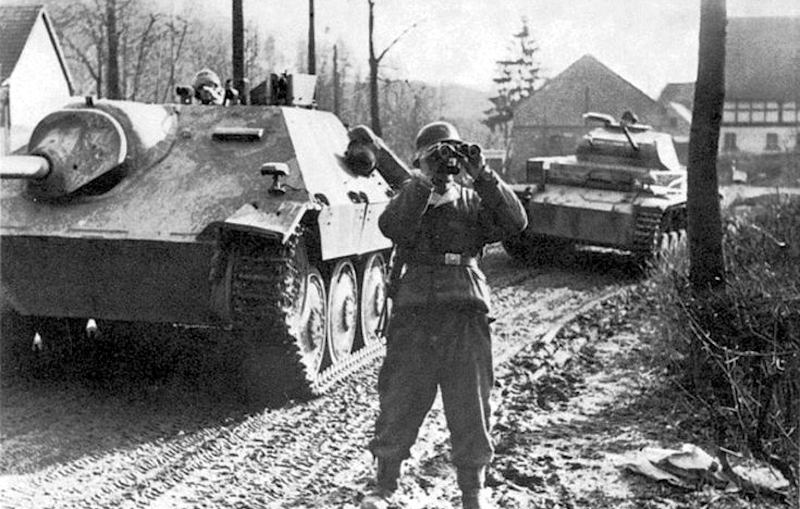
Table of Contents
The 11th SS Volunteer Panzergrenadier Division Nordland stands out as one of the most documented foreign volunteer units in the German Waffen-SS during World War II.
Formed in 1943, this division brought together volunteers from all over Europe. Despite the name, it mostly consisted of ethnic Germans, not the Scandinavian volunteers you’d expect.
Despite its “volunteer” label, the Nordland Division ended up with a lot of conscripts and ethnic Germans from Romania. Norwegian and Danish volunteers got grouped into specialized regiments, but they weren’t the majority.
The unit went through several name changes during its formation. It was going to be called “Waräger,” but Hitler nixed that idea himself.
From its training grounds in Croatia to the brutal fighting on the Eastern Front, the division found itself in major campaigns like the Battle of Narva and the last stand in Berlin.
Formation and Structure
The 11th SS Volunteer Panzergrenadier Division Nordland went through a few organizational shakeups from its start in February 1943 to when it finally deployed.
They pulled together existing Scandinavian volunteer units and mixed in ethnic Germans and other foreign volunteers across a bunch of specialized regiments.
Origins and Initial Organization
Hitler ordered the division’s creation in February 1943, aiming for an SS unit with foreign officers. In March 1943, the SS-Panzergrenadier-Regiment Nordland broke away from the SS Division Wiking to lay the groundwork for the new formation.
At first, they called it Kampfverband Waräger and considered naming it “Waräger” (The Vikings), but Hitler personally shot down that idea.
The unit cycled through a few official names, including:
- Germanische-Freiwilligen-Division
- SS-Panzergrenadier-Division 11 (Germanische)
-
- SS-Freiwilligen-Panzergrenadier-Division Nordland
By July 1943, formation wrapped up and the division became operational under the III (Germanic) SS Panzer Corps.
Regimental Composition and Honor Titles
The division’s two main Panzergrenadier regiments got honor titles that were supposed to reflect their national makeup. SS-Panzergrenadier-Regiment 23 Norge was for Norwegian volunteers, and SS-Panzergrenadier-Regiment 24 Danmark for Danish personnel.
These names were meant to show off the unit’s Nordic character, but the reality didn’t quite match the labels.
Divisional structure:
11. SS-Freiwilligen-Panzer-Grenadier-Division ‘Nordland’ |
Division units |
|---|---|
Stab/11.SS-Freiw. Pz.Gren.Div. Nordland |
(Staff) |
SS-Freiw.Pz.Gren.Rgt. 23 Norge |
I.-III.-(Rgt.) IG- (infantry guns), Pio- (engineers), Pak (AT), Flak (AA) company; each batallion 3 Rifle, 1 heavy company |
SS-Freiw.Pz.Gren.Rgt. 24< Danmark/td> |
I.-III. as Rgt. 23 (I.Btl APC; from 1944: I./23. und I./24. (armoured) APC) |
SS-Panzer-Abt. 11 ‘Hermann v. Salza’ |
|
SS-Panzer-Aufkl.Abt. 11 |
2 armoured cars, 2 recon comp (APC) |
SS-Art.Rgt. (mot) 11 Nordland |
III. (3 batteries leFh 18) |
SS-Pz.Nachr.Abt. 11 |
Fernspr.-/Funk-Kp., mot. Nachr.Kolonne (telephone/radio company, motorized communications column) |
SS-Pz.Jäger/StuG-Abt. 11 |
3 StuG IV, 1 Pz.Jg.Kp (motorized tank hunter comp with tractors) |
SS-Pz.Pionier-Btl. (mot) 11 |
3 Pio comp. (engineers), mot. APC-coys (s.Wfr = rocket launchers) |
SS-Flak-Abt. (mot.) 11 |
3 heavy 8,8-cm-Flak batteries, 1 mixed Flak (AA) batterie |
Di.Na.Fü. Nordland Nr.11 |
Economic/Inst./Replacement Battalion No. 11/ 2 Medical Company 11/ Commander Division Supply Troops 11, Field Hospital No. 11 |
Strength 1943: 11.400 Mann
Foreign Volunteers and Recruitment
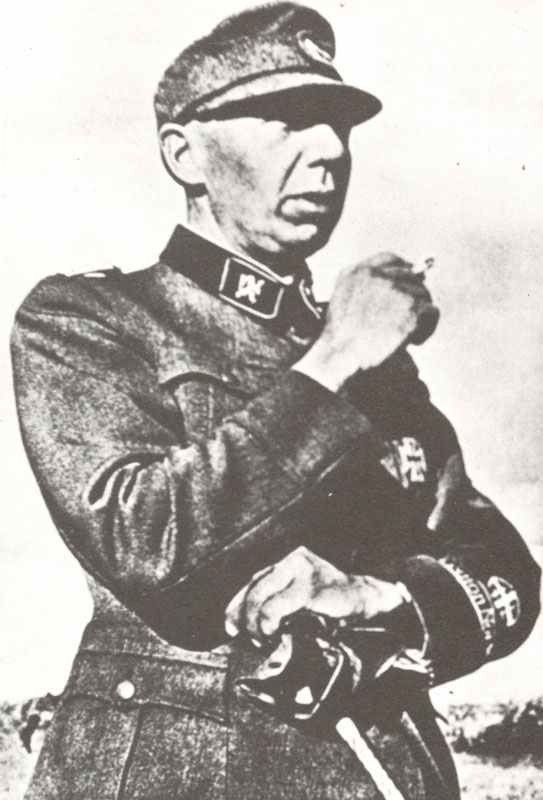
Despite being billed as a volunteer division for Nordic recruits, the actual recruitment told another story. By autumn 1943, when the division hit the Eastern Front, about 80% of its personnel were Reichsdeutsche from Germany or Volksdeutsche (ethnic Germans).
Several thousand ethnic Germans from Romania got drafted into the Waffen SS in 1943 just to fill out Nordland’s ranks. This really clashed with the idea of a Scandinavian volunteer force.
Waffen-SS foreign volunteers from Western Europe did serve, but they were a small minority. The Norwegian cadre in Regiment 23 Norge and Danish personnel in Regiment 24 Danmark made up the backbone of foreign volunteers.
In 1943, 1,386 Danes, 534 Norwegians, and 50 Swedes and Finns served in the division. In May 1944, there were 1,109 Danes, 338 Norwegians, and 35 Swedes and Finns.
Around 20 members of the British Free Corps were assigned to SS Panzer Reconnaissance Unit 11 in March 1945.
Many in the division were conscripts, not actual volunteers, even though the official name included “Freiwilligen.”
Command Hierarchy and Leadership
The division stuck to a standard Waffen-SS command structure and cycled through four main commanders. SS-Brigadeführer Franz Augsberger kicked things off from March to May 1943 while the unit was still forming.
SS-Gruppenführer Fritz von Scholz took over from May 1943 to July 1944. He died from artillery fire while visiting the front during the Battle of Tannenberg Line.
SS-Brigadeführer Joachim Ziegler led the division from July 1944 through most of its Eastern Front service, up to April 1945.
SS-Brigadeführer Gustav Krukenberg commanded in April 1945, guiding the unit during the Battle of Berlin until the bitter end.
Key Commanders and Leaders
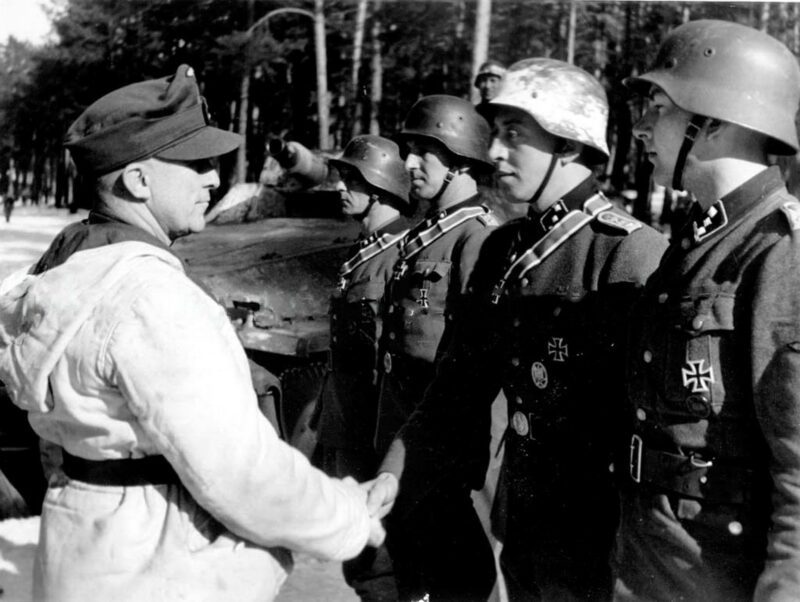
The 11th SS Volunteer Panzer Grenadier Division ‘Nordland’ had four different commanders from 1943 to 1945. Each one brought his own experience and faced unique challenges as the division fought in Croatia and then on the Eastern Front.
Franz Augsberger
Franz Augsberger was the first to command the Nordland Division, from March 22, 1943, to May 1, 1943. He held the rank of SS-Brigadeführer but only led for about six weeks.
Augsberger took over while the division was still forming and training. The unit was first called Kampfverband Waräger before switching to Nordland.
He helped lay the groundwork for what would become a notable Waffen-SS formation. His short stint ended when the SS wanted a more senior officer as combat operations loomed.
Fritz von Scholz
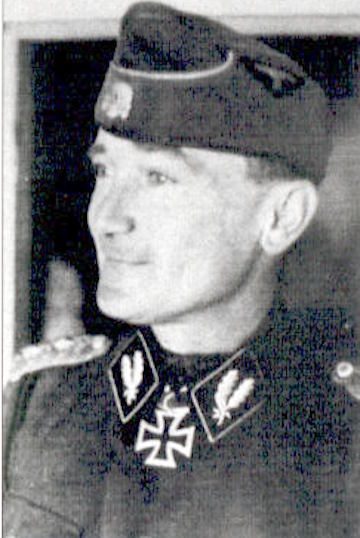
Fritz von Scholz led the Nordland Division from May 1, 1943, to July 27, 1944, with the rank of SS-Gruppenführer. He was the highest-ranking officer to command the division.
Von Scholz oversaw the division’s key development phase. Under him, the unit finished training in Croatia in September 1943 and fought Yugoslav partisans.
He guided Nordland to the Eastern Front as part of Army Group North. The division saw major battles with the Soviets under his watch.
Von Scholz’s tenure lasted over a year, the longest of any commander. He was killed in action in July 1944 as things unraveled for Germany.
Joachim Ziegler
Joachim Ziegler took over on July 27, 1944, and led until April 25, 1945. He held the rank of SS-Brigadeführer.
Ziegler stepped in during a rough time. The Eastern Front was falling apart, and the division was under constant Soviet pressure.
Although the unit had already fought at Narva, Ziegler faced even tougher situations as the war wound down. His command ended just days before Germany surrendered.
He was relieved of duty for refusing a senseless attack order.
Gustav Krukenberg
Gustav Krukenberg finished out as the last commander, from April 25, 1945, to May 8, 1945. He also held the rank of SS-Brigadeführer. He brought some 300 Frenchmen of the SS Charlemagne with him, which reinforced the remnants of the division.
Krukenberg’s command lasted only two weeks and covered the closing days of World War II. He led the battered division as Germany collapsed and surrendered.
The division’s remnants fought their last battles under him. Krukenberg oversaw the unit’s final moments before Germany surrendered on May 8, 1945.
Combat Operations on the Eastern Front
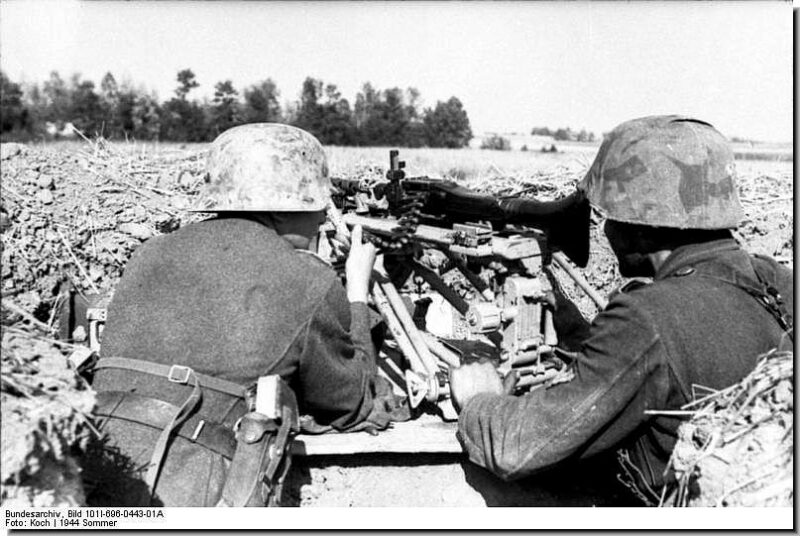
The 11th SS Volunteer Panzergrenadier Division Nordland started combat operations in September 1943 with anti-partisan warfare in Croatia. Soon after, it moved into major battles against the Soviet Red Army on the Eastern Front.
The division got thrown into intense fighting around Leningrad and then retreated through Estonia as the German front collapsed.
Deployment to Croatia and Anti-Partisan Actions
After forming in Germany, the division deployed to the Independent State of Croatia in September 1943 under the III (Germanic) SS Panzer Corps. This was both a training period and a baptism by fire against Yugoslav partisans.
The division carried out harsh anti-partisan operations in the region. In mid-October 1943, Nordland units burned and looted several Serbian villages in the Banija region.
During these actions, the division helped organize local collaborationist Chetnik militia units. Their tactics against suspected civilian supporters of the partisans gave Nordland a tough reputation.
The Croatian deployment gave the mostly inexperienced foreign volunteers their first real combat exposure. Many soldiers were still picking up German military procedures and tactics at this point.
Leningrad and Oranienbaum Engagements
The division reached the Leningrad front as part of Army Group North in late 1943. Soviet forces launched major attacks to break the German siege of the city.
Red Army pressure forced Nordland to pull back to Oranienbaum. The Soviet Krasnoye Selo–Ropsha Offensive kicked off on January 14, 1944, and smashed the German defensive line.
The following Kingisepp–Gdov Offensive pushed German units even further back. Nordland retreated alongside the rest as the Soviets advanced fast.
The division took heavy losses in these battles. For many foreign volunteers, this was their first taste of fighting a well-equipped enemy.
Retreat through Narva and Estonia
German forces set up new defensive lines near Narva in northeastern Estonia. Starting July 27, 1944, Nordland fought in the Battle of Tannenberg Line with the 20th Waffen Grenadier Division.
The division’s commander, SS-Gruppenführer Fritz von Scholz, died from wounds after an artillery barrage on July 28, 1944. Two regimental commanders also lost their lives in these battles.
After Riga fell, the division pulled back into the Courland Pocket. By December 1944, constant fighting and losses left the division with just 9,000 men.
In January 1945, the Red Army evacuated the rest of the division by sea from Libau, a Baltic port. This ended the division’s Eastern Front operations.
Major Battles and Campaigns
The Nordland Division fought in three major campaigns on the Eastern Front between 1943 and 1945. The battles at Narva, the Tannenberg Line, and in the Courland Pocket really defined the division’s combat record.
Battle of Narva
The division reached the front near Leningrad in late 1943 with the III SS Panzer Corps. The Red Army launched heavy assaults to break the German hold on the city.
Soviet attacks forced Nordland back to Oranienbaum. On January 14, 1944, the Krasnoye Selo-Ropsha Offensive shattered the German front line.
The Kingisepp-Gdov Offensive pushed German troops to retreat even further. They ended up falling back to Narva in northeastern Estonia, creating a new defensive line along the Narva River.
The division fought with other German units to hold this new front. This marked the start of major combat for Nordland on the Eastern Front.
Battle of Tannenberg Line
From July 27, 1944, Nordland fought in the Battle of Tannenberg Line. The division worked with the 20th Waffen Grenadier Division of the SS (1st Estonian) and parts of the Grossdeutschland Division.
The fighting was brutal. Two regimental commanders died during these operations.
Division commander Fritz von Scholz went to the front line in the middle of the battle. He got caught in an artillery barrage and suffered a fatal head wound. Scholz died on July 28, 1944.
SS-Brigadeführer Joachim Ziegler stepped in to take command. The Tannenberg Line battles showed just how heavy the division’s losses were in defensive action.
Courland Pocket and Libau Evacuation
After Riga fell, the division retreated into the Courland Pocket, a German-held area cut off by Soviet advances in Latvia.
From late October to December 1944, Nordland stayed trapped there. By early December, the division was down to just 9,000 men.
In January 1945, orders came for the division to head to Libau. This Baltic port was their last chance to leave the Eastern Front.
The division evacuated by sea from Libau. This move saved the remaining troops from destruction or capture in the Courland Pocket. Afterward, the unit was sent to defend Berlin in the war’s final months.
Battle of Berlin and Final Actions
The division entered Berlin in April 1945, its strength worn down to brigade level—just 600-700 men per regiment. Even with some reinforcements, most new recruits had barely any combat experience, and Soviet forces completely outmatched them in the city fighting to come.
Defensive Positioning within Berlin
The 11th SS Nordland Division dug in across southeastern Berlin as part of General Helmuth Weidling’s LVI Panzer Corps. They set up headquarters at Hasenheide and deployed mainly in Neukölln and the eastern parts of Kreuzberg.
The 23rd ‘Norge’ Panzergrenadier Regiment held its sector with about 600 men. The 24th ‘Danmark’ Panzergrenadier Regiment defended the neighboring area with roughly 700 troops.
Supporting units included what was left of SS-Panzer-Regiment 11 and SS-Panzerjäger-Abteilung 11. The SS-Artillerie-Regiment 11 gave fire support from hidden spots around the district.
Even after reinforcements from Neustrelitz, division strength stayed dangerously low. Many replacements came straight from training units and just weren’t prepared for the chaos of urban battle.
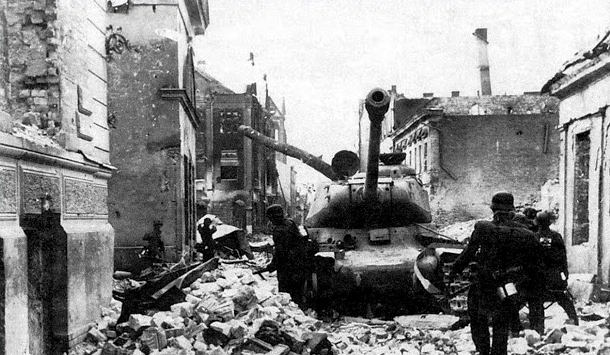
Key Engagements and Locations
Nordland forces clashed with Soviet troops from the 5th Shock Army in intense street fighting across Neukölln. The division tried to hold key transportation points like Hermannplatz and nearby U-Bahn stations.
They focused on blocking Soviet advances toward the Reich Chancellery. Units relied heavily on Panzerfausts to take out Soviet armor in close-quarters fighting.
The Weidendammer Bridge became a crucial defensive spot. Nordland troops teamed up with Hitler Youth units using anti-tank weapons to stop Soviet river crossings.
SS-Pionier-Bataillon 11 set up defenses and demolition charges at bridges and intersections. The SS-Flak-Abteilung 11 turned anti-aircraft guns on Soviet infantry and tanks at street level.
Fighting got even worse around Stadtmitte U-Bahn Station as Soviets pushed deeper into central Berlin. The division coordinated with remaining Wehrmacht units to defend the government quarter.
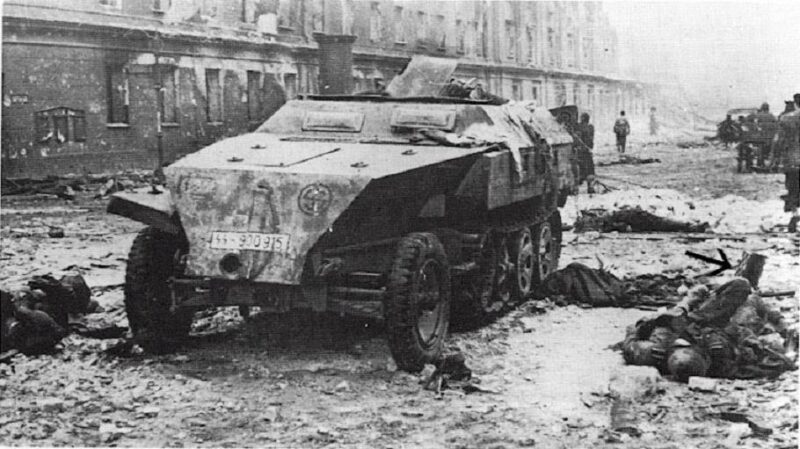
Surrender and Aftermath
By late April 1945, the division’s combat effectiveness had collapsed as ammunition ran out. SS-Nachrichten-Abteilung 11 held communications together until the final days in Berlin.
Most survivors surrendered to Soviet forces on May 2, 1945. The SS-Sanitäts-Abteilung 11 managed to evacuate wounded soldiers to makeshift aid stations during the battle.
Foreign volunteers got especially harsh treatment in Soviet captivity. Many Danish and Norwegian members died in prison camps right after the war.
The division’s SS-Wirtschafts-Bataillon 11 and SS-Instandsetzungs-Abteilung 11 stopped functioning by the end. Equipment and vehicles littered the Neukölln sector, abandoned as the battle ended.
Some officers tried to break out toward American lines in western Germany. Most were either captured or killed during these desperate attempts in early May 1945.
Division Organization and Armament
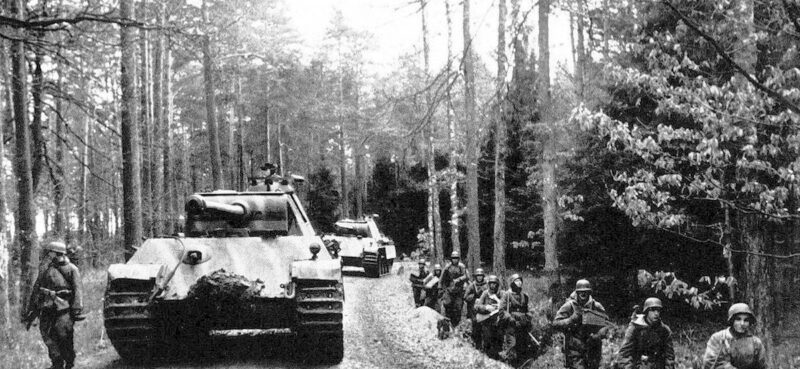
The 11th SS Volunteer Panzergrenadier Division Nordland followed a standard Waffen-SS divisional structure but included special units for Scandinavian volunteers and ethnic Germans. The division had two main infantry regiments, plus armored battalions and all the usual support services.
Primary Staff and Support Units
The divisional staff ran operations from headquarters units led by experienced SS officers. The 11th SS Panzer Artillery Regiment provided fire support wherever needed.
The 11th SS Pioneer Battalion handled engineering jobs like building bridges and blowing them up. The 11th SS Signals Battalion kept communications working, which was pretty crucial in the chaos.
Essential support units included:
- 11th SS Panzer Reconnaissance Battalion
- 11th SS Flak Battalion (anti-aircraft defense)
- 11th SS Supply Troop
- 11th SS Truck Park
- Medical and Administration Companies
The 11th SS Feld Ersatz Battalion acted as the replacement pool. They trained new recruits and sent fresh troops to the front as needed.
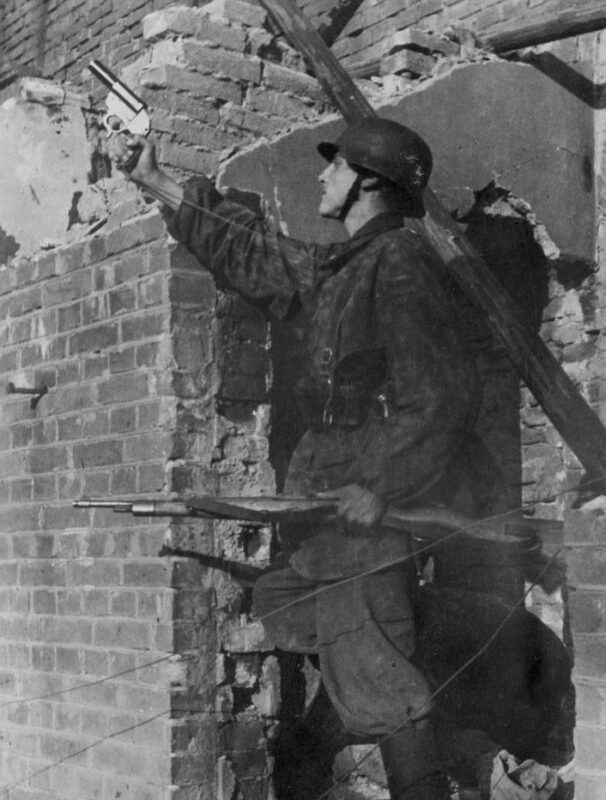
Armored and Infantry Regiments
Two main infantry regiments made up the division’s core. SS-Panzergrenadier-Regiment 23 “Norge” took mostly Norwegian volunteers. SS-Panzergrenadier-Regiment 24 “Danmark” relied mainly on Danish personnel.
The 11th “Hermann von Salza” SS Panzer Battalion gave the division its armored punch. They used German tanks like the Panzer IV and, later, Panther tanks.
For anti-tank work, two specialized battalions stepped up. The 11th SS Panzerjäger Battalion used towed anti-tank guns and self-propelled tank destroyers. The 11th SS Sturmgeschütz Battalion ran assault guns for both infantry support and tank hunting.
All these units worked together as a panzergrenadier division. Infantry rode in armored vehicles while tanks backed them up with direct fire.
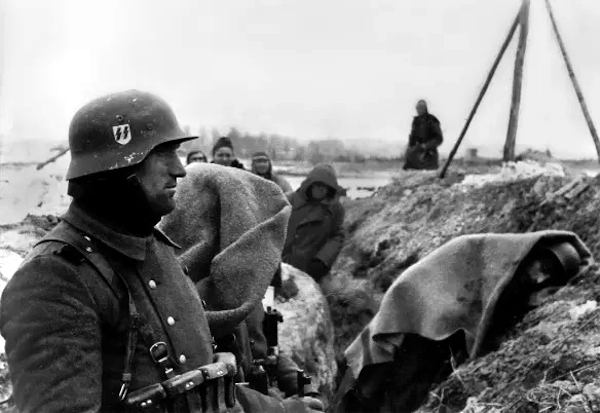
Typical Equipment and Weaponry
Most troops carried standard German small arms. The Karabiner 98k rifle was the go-to weapon, while machine gun teams lugged MG 34 or MG 42s for squad support.
Heavy weapons included:
- 8cm mortars for indirect fire
- Panzerfaust anti-tank rockets
- Various anti-tank guns (37mm, 50mm, 75mm)
The panzer battalion used different tanks as the war went on. Early on, they had Panzer III and IV tanks. Later, they got some Panthers and even a few Tiger I tanks, though not many.
Artillery regiments used 10.5cm howitzers as their main field guns. When they could get them, heavier 15cm howitzers provided long-range support.
Legacy and Historical Assessment
The 11th SS Nordland Division stands out as a real example of the Waffen-SS’s push to bring in foreign volunteers and build multinational units. Its structure, mix of troops, and even its insignia show just how complex Germanic SS formations were during World War II.
Role within the Waffen-SS
The Nordland Division played a major part in the Waffen-SS foreign volunteer program. It served under the III (Germanic) SS Panzer Corps, led by Felix Steiner.
The division fought on several fronts from 1943 to 1945, seeing action in Croatia, the Eastern Front, and finally the Battle of Berlin.
Nordland was the Waffen-SS’s attempt to build elite panzergrenadier units from non-German recruits. They got modern equipment, including tanks and assault guns.
The division’s combat record showed both what foreign volunteer units could do and where they fell short. Soviet offensives in 1944 hit them hard, dropping their numbers from over 11,000 to 9,000 by December that year.
Nationalities and Foreign Contribution
Despite what the name suggests, the division was mostly made up of ethnic Germans from Romania. Actual Scandinavian volunteers made up just a minority.
The Norge Regiment had Norwegian volunteers. The Danmark Regiment included Danish personnel.
A small Swedish platoon, the Schwedenzug, operated inside the division.
Key foreign contributors included:
- Hans-Gösta Pehrsson – Swedish volunteer and Schwedenzug commander
- Niels Kryssing – Son of the highest-ranking non-German Waffen-SS officer
- Erik Wallin – Swedish volunteer whose experiences inspired literature
Foreign volunteers served right alongside ethnic Germans and Reich Germans. These mixed formations reflected how the Waffen-SS recruited across Europe, for better or worse.
Ranks and Insignia
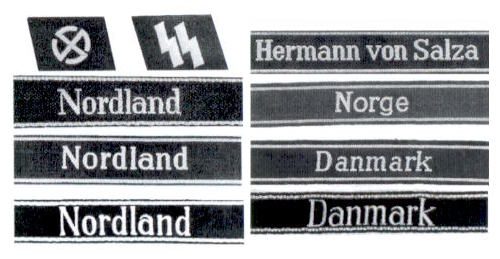
The Nordland Division used the standard Waffen-SS ranks and insignia. They did have specific unit identifiers, though.
The division’s tactical symbol was a Sonnenrad (sun wheel) in a circle.
Several cuff titles set the units apart:
- “Nordland” for the division
- “Norge” for SS-Panzergrenadier Regiment 23
- “Danmark” for SS-Panzergrenadier Regiment 24
- “Hermann von Salza” for SS-Panzer Battalion 11
They got permission to use a Sonnenrad instead of SS runes on their collar tabs. Still, most stuck with the classic SS runes in the field.
Thirty-two members received the Knight’s Cross. The division also handed out decorations like the German Cross in Gold and the Close Combat Clasp.
Frequently Asked Questions
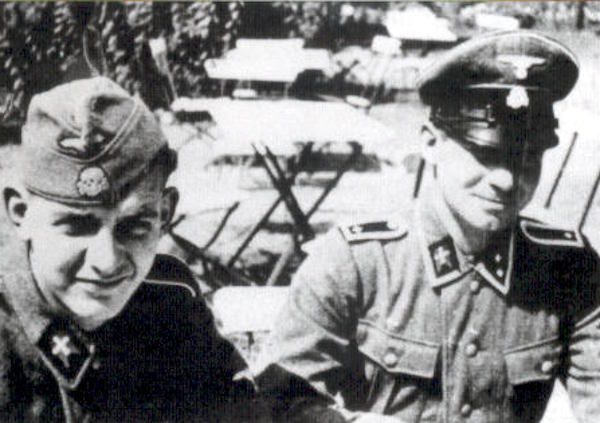
The 11th SS Volunteer Panzergrenadier Division Nordland operated from July 1943 to May 1945 as a Waffen-SS unit. Even though the name implies a force of foreign volunteers, most troops were Germans and ethnic Germans from Romania. Only a minority were from Scandinavia.
What was the primary role and composition of the 11th SS Volunteer Panzergrenadier Division during World War II?
The division served as a panzergrenadier unit in the III (Germanic) SS Panzer Corps. It was mechanized infantry with armored support.
By autumn 1943, nearly 80% of the personnel were Germans or ethnic Germans. Foreign volunteers never made up more than a fraction of the division.
The unit’s two main regiments, SS-Panzergrenadier-Regiment 23 Norge and SS-Panzergrenadier-Regiment 24 Danmark, referenced Norway and Denmark in name.
How was the 11th SS Volunteer Panzergrenadier Division formed, and who were its main constituents?
Hitler ordered the division’s creation in February 1943. In March 1943, the SS-Panzergrenadier-Regiment Nordland split off from SS Division Wiking to form the backbone of the new unit.
The original plan was for foreign volunteers to fill the officer ranks. Hitler himself rejected the name “Waräger” (Vikings).
Most of the men came from Germany and ethnic German communities in Romania. Despite the Nordic vibe in the name and regimental titles, Scandinavians were always outnumbered.
What were the key battles and military engagements involving the 11th SS Volunteer Panzergrenadier Division?
The division’s first action was against Yugoslav partisans in Croatia, starting in September 1943. In mid-October, they burned and looted several Serbian villages in the Banija region.
On the Eastern Front, the unit fought in the Battle of Narva and at the Tannenberg Line. Starting July 27, 1944, they fought alongside the 20th Waffen Grenadier Division and parts of the Grossdeutschland Division.
The division tried to hold off Soviet offensives near Leningrad. They retreated through the Courland Pocket and got evacuated by sea in January 1945.
Their last big fight was the Battle of Berlin, beginning April 16, 1945. French troops under their command destroyed about half of the 108 Soviet tanks knocked out in Berlin’s central district.
How did the 11th SS Volunteer Panzergrenadier Division’s operations impact the outcome of World War II?
Honestly, the division didn’t have much impact on the war’s outcome. It formed late and was never all that large. By the time it reached the Eastern Front in autumn 1943, Germany was already on the defensive.
Its anti-partisan actions in Croatia helped enforce Nazi occupation policies. The division also organized local collaborationist Chetnik militias.
Their defensive efforts only slowed the Soviets a bit. When they fought in Berlin, it was more of a last stand than anything that could change the war’s direction.
What was the fate of the 11th SS Volunteer Panzergrenadier Division at the end of the war?
The division was mostly wiped out during the Battle of Berlin in late April and early May 1945. The last Tiger tank went down trying to cross the Weidendammer Bridge.
On May 1, 1945, after Hitler’s suicide, multiple breakout attempts started. Ten main groups tried to escape northwest from the Reich Chancellery.
Most of these breakouts failed under heavy Soviet fire. A few small groups managed to reach American forces at the Elbe, but most were killed or captured along the way.
Division commanders had different fates. Joachim Ziegler died of wounds on May 2, while Gustav Krukenberg hid for a week before surrendering to the Soviets.
How is the 11th SS Volunteer Panzergrenadier Division regarded in historical context, considering its volunteer nature and wartime actions?
This division really shows how tangled Nazi Germany’s foreign recruitment got. Even though they called it a “volunteer” division, most of the people in it were actually German, not foreign recruits.
Historians tend to dig into the gap between what Nazi propaganda claimed—some grand international anti-communist effort—and what was actually happening. The reality? Germany was struggling to find real foreign volunteers at this point in the war.
When the division operated in Croatia, reports show it burned villages and worked with local militias. These actions lined up with Nazi occupation policies and, frankly, made life even harder for civilians in the Balkans.
Later, the division fought during the defense of Berlin. Military historians look at how it performed tactically, but always keep its place in the larger Waffen-SS in mind.
References and literature
The Waffen-SS (Martin Windrow)
Die gepanzerten und motorisierten deutschen Grossverbände 1935-1945 (Rolf Stoves)
Waffen-SS Encyclopedia (Marc J. Rikmenspoel)
Hitler’s Elite – The SS 1939-45 (Chris McNab)
Waffen SS in Action (Norman Harms)
Into the Abyss – The last years of the Waffen-SS (Ian Baxter)
Waffen SS in Russia (Bruce Quarrie)
Waffen-SS (2) From Glory to Defeat 1943-1945 (Robert Michulec, Ronald Volstad)
The Waffen-SS (3): 11. to 23. Divisions (Gordon Williamson)


